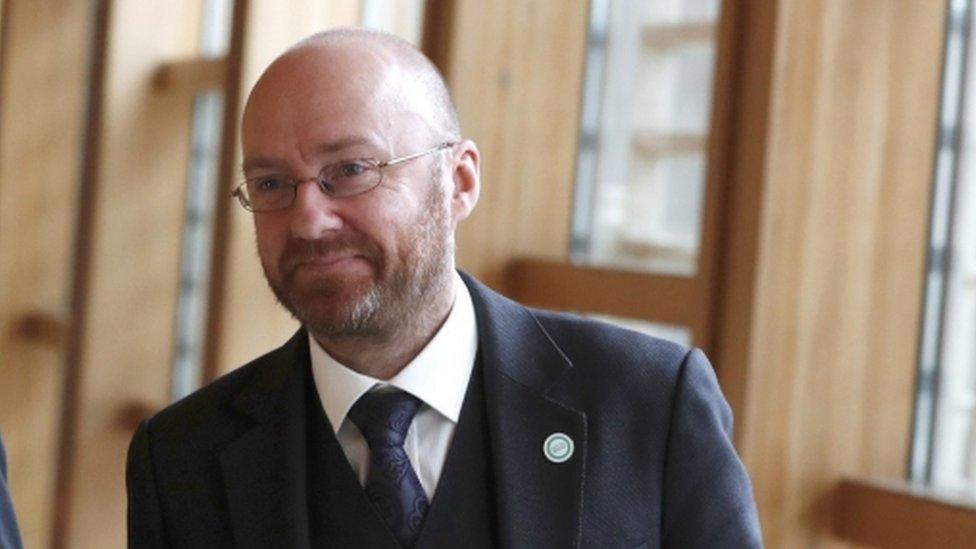Election 2017: Where have all the politicians gone?
- Published
There will be fewer candidates standing in Scottish seats next month than in any other recent general election. So where have all the prospective politicians gone?

Previous years
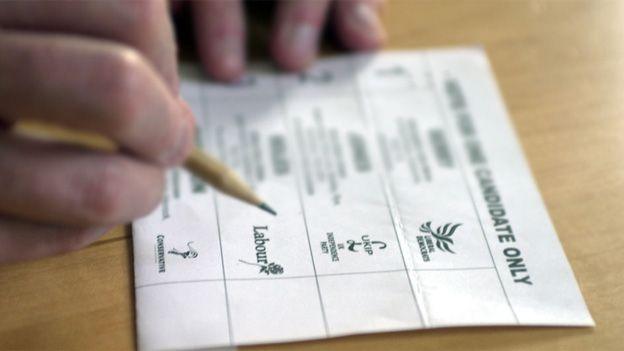
Voters in Scotland will have less choice in this election than ever before
For June's general election, 266 candidates have put themselves forward for Scotland's 59 constituencies. Each of the four major parties - the SNP, Conservatives, Labour and Lib Dems - have put forward a candidate in every seat.
That leaves just 30 independent candidates and people representing "other" parties, such as the Greens, UKIP and others.
This is a huge drop on the figure from previous years - in 2015 there were 346 candidates, with 110 not representing one of the four major parties. In 2010, 335 party candidates stood, including 99 from "other" parties.
And in 2005, the first year of the current boundaries (with 59 constituencies rather than 72), there were 370 party candidates, 136 of whom were in the "other" column.
The upshot of all of this is that Scottish voters are going into this general election with less choice than ever before. In 36 of the 59 constituencies, there are only the four major parties on the ballot paper.
And it could make a difference; between them, "other" parties and independent candidates won 95,112 votes in the 2015 election. A drop in the ocean among the 2.9m votes actually cast, perhaps, but more than enough to make the difference in various local contests.

Greens and UKIP
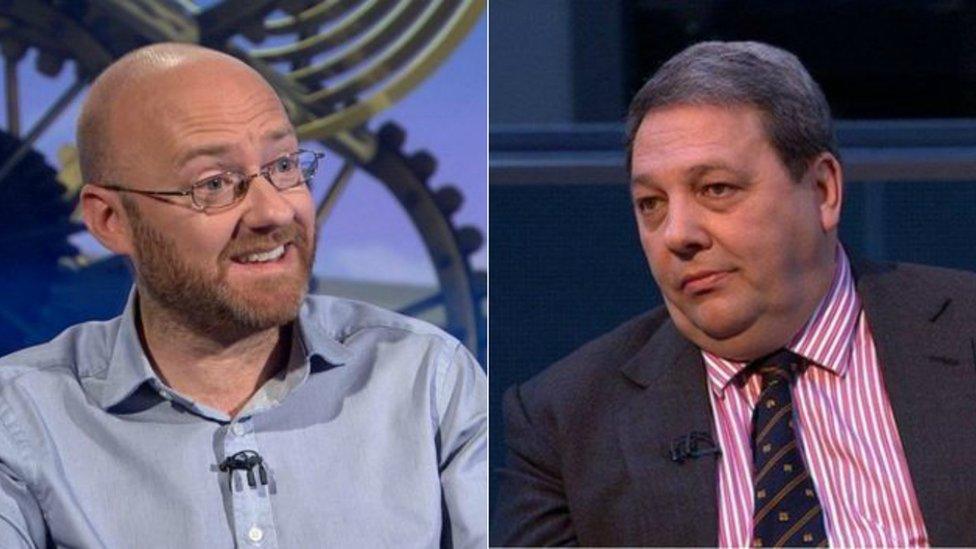
The Greens and UKIP are running less candidates than in previous years
The bulk of the missing candidates in this election are from two parties, the Scottish Greens and UKIP.
The Greens made headlines by announcing they were only running three candidates on 8 June, having fielded 32 in 2015.
The Greens themselves insist this is because they are focused on local matters, and are "targeting" their resources. Their opponents claim they are standing aside to allow the SNP a clear run, without splitting the pro-independence vote.
It is also worth noting that UKIP have also recorded a sizable decline in candidates, from 41 in 2015 to 10 in 2017.
Their reasoning might be somewhat different to the Greens; the party after all has in effect achieved its founding goal, of Brexit. What is left for UKIP to achieve now, other than overseeing the UK's exit from the EU?
Scottish leader David Coburn is certainly no fan of the Scottish Conservatives, and so is unlikely to be standing aside in their favour. He recently tweeted, external that "an unchecked rampant Tory government is bad for democracy".

So who is running?
Outside of the four main parties, who each have 59 candidates, June's election will feature:
10 independent
10 UKIP
3 Scottish Greens
2 Scottish Christian Party
1 Social Democratic Party
1 Women's Equality Party
1 Something New
1 Scotland's Independence Referendum Party
1 Independent Sovereign Democratic Britain

Disappearing parties
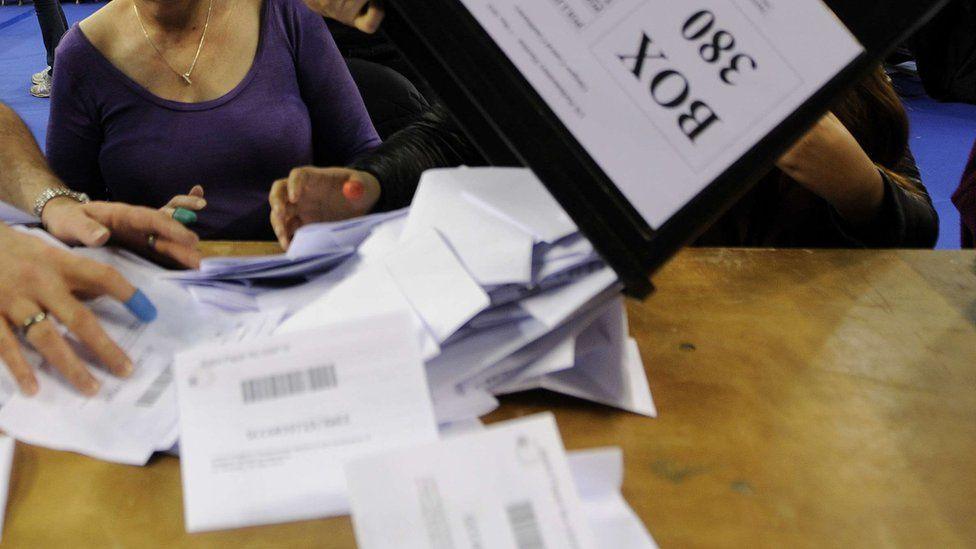
At least counting the votes might be a bit easier with less parties on the ballot paper
Other than the Greens and UKIP, who else is missing from the field this year?
The Scottish Socialist Party seems to have disappeared from Westminster elections. They ran 58 candidates in 2005, then 10 in 2010, four in 2015 and have none in 2017.
The SSP says the 2017 election is "all about independence", which suggests many of their voters could swing behind the SNP - although SSP does note that the SNP does not have a "monopoly" on the issue.
The BNP also seem to have declined into obscurity north of the border. They ran 13 candidates in 2010, but haven't featured since. Elsewhere on the right wing, the National Front ran two candidates in 2015, but again are not contesting any seats in 2017.
The Cannabis is Safer than Alcohol Party ran eight candidates in 2015, but was deregistered by the Electoral Commission in November 2016, while the Trade Union and Socialist Coalition put up 10 candidates last time out, but also have none this year.
Elsewhere, the Scottish Jacobite Party fielded two candidates in 2010, as did the Communist Party.
Minor parties contesting the 2005 elections included the Pride in Paisley Party, the Death, Dungeons and Taxes Party, and the Scottish Senior Citizens Unity Party.

Why is this happening?
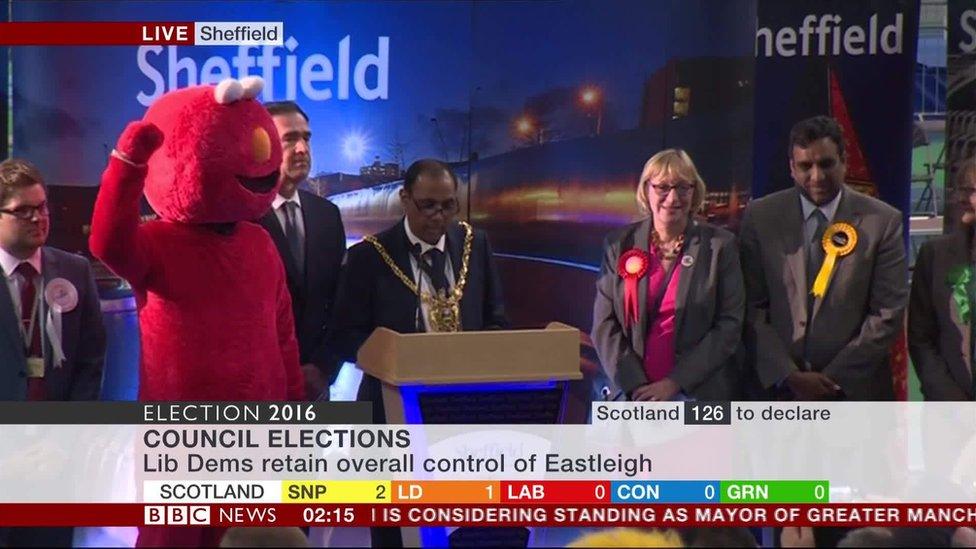
Candidates focusing on local issues may have chosen to focus on local elections instead
There are all sorts of reasons why smaller parties might not be running in this year's election.
It can't have escaped anyone's notice that there have been rather a lot of elections in Scotland lately. The Westminster election will in fact be the seventh inside the span of three years and one month. The joke is that polling stations are occasionally used as primary schools too.
Running in elections isn't cheap - candidates have to stump up a deposit of £500 to stand in June's contest, and don't get their money back unless they win 5% of the vote. So if a party were to put up 40 candidates and didn't get any deposits back, they would be out of pocket by £20,000 before you even factor in the cost of actually campaigning.
One of those six other elections was just a few weeks ago. Did local single-issue candidates have their say in May's council elections instead? It is possible the likes of the Rubbish Party might have sought to raise their issues in a Westminster election, had there not been a more local one immediately beforehand.
This snap election also came almost completely out of the blue. Theresa May's bombshell didn't leave local campaigners much time to organise themselves, especially in the thick of other elections.
And finally, with all of the new powers devolved to Holyrood, is it possible people see less point in sending a local campaigner to Westminster? Perhaps they think their local issues are best handled with local powers, while the big parties can be left to handle the national issues in London.

What could it mean?
The issue of parties not running came into focus via the Dumfriesshire, Clydesdale and Tweeddale seat of David Mundell, where the Scottish secretary won by 798 votes in 2015.
The Greens won 839 votes in the area - leading to claims that those voters could have propelled the SNP to victory had the Greens not stood.
There is of course no way of telling who those Green voters would pledge their support to - indeed they might not bother voting at all - but the assumption made by many is that they would back another pro-independence party, with the SNP the most prominent option.
But if we look at that same seat, in 2015 UKIP won 1,472 votes - outpolling the Lib Dems. If it is reasonable to assume these voters would gravitate to the most Eurosceptic party on the ballot paper, the Conservatives, then that would completely negate those Green votes with a couple of hundred to spare.
The same pattern appears in neighbouring Berwickshire, Roxburgh and Selkirk, held by the SNP by 328 votes, the slimmest majority in the country.
In 2015, UKIP polled 1,316 votes in the constituency, and the Greens 631. So if those UKIP voters land with the Tories and the Greens swing behind the SNP, it could push the Tories over the line.
One more example - in Edinburgh South, Labour's Ian Murray increased his majority to 2,637 votes in 2015. But that lead looks altogether less comfortable if you shift the 2,090 Green votes into the SNP column.
- Published12 May 2017
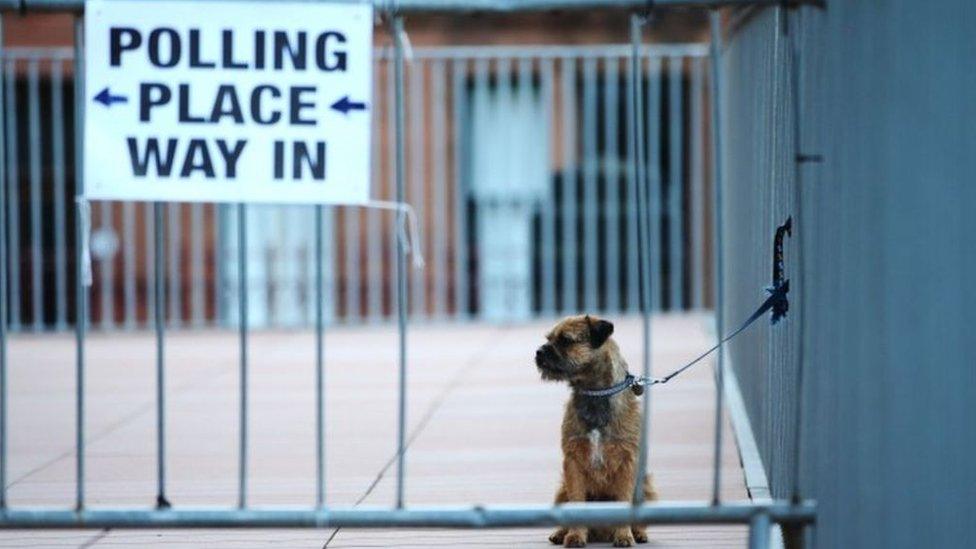
- Published12 May 2017

- Published10 May 2017
